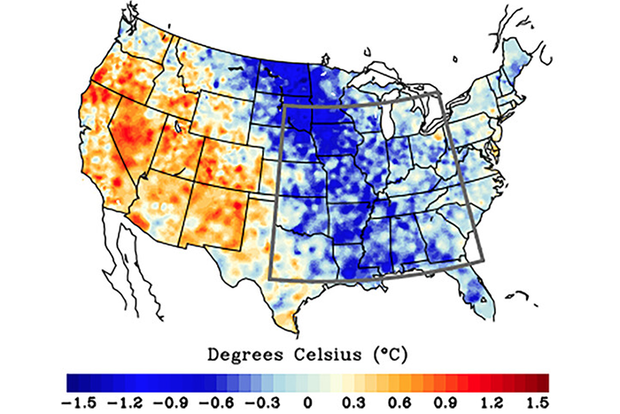Why hasn’t the central US warming hole disappeared?

Observations show a cooling trend in summer daytime temperatures in the central United States, despite warming trends elsewhere. Credit: doi:10.1175/JCLI-D-22-0716.1

Observations show a cooling trend in summer daytime temperatures in the central United States, despite warming trends elsewhere. Credit: doi:10.1175/JCLI-D-22-0716.1
Amongst rising temperatures in the Western and Eastern United States, there has been a cooling trend in summer daytime temperatures over the central United States since the mid-twentieth century. This cooling trend was thought to have formed from internal climate variability and would likely disappear. However, the “Warming Hole” has prevailed for decades despite global warming. Scientists are now reexamining this phenomenon, which may extend beyond natural variability to include anthropogenic influences such as aerosol-induced cooling, hydrologic cycle intensification due to greenhouse gas emissions, and land use changes.
In a new Journal of Climate, authors Jon Eischeid, Martin Hoerling, X.-W. Quan, Arun Kumar, Joseph Barsugli, Zachary Labe, Kenneth Kunkel, Carl Schreck III, David Easterling, T. Zhang, J. Uehling, and X. Zhang use a variety of climate model experiments with large ensembles to better understand the role of external radiative forcing and to diagnose the possibility that internal variability alone could account for the particular pattern of twenty-first-century U.S. summertime warming.